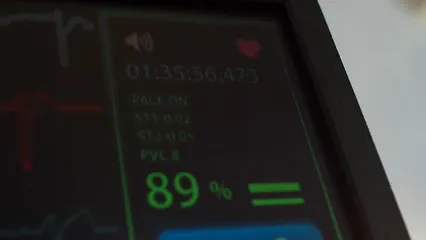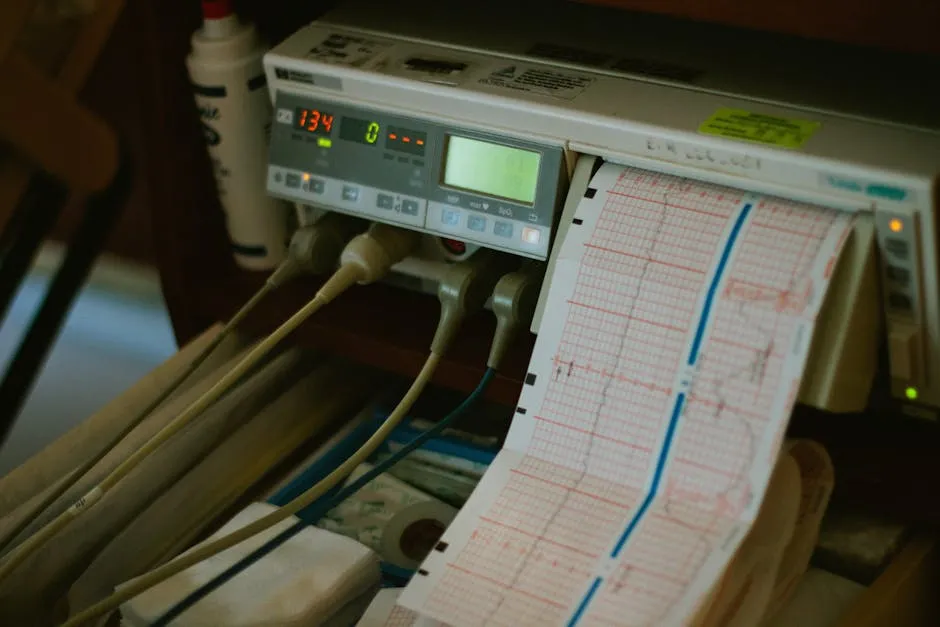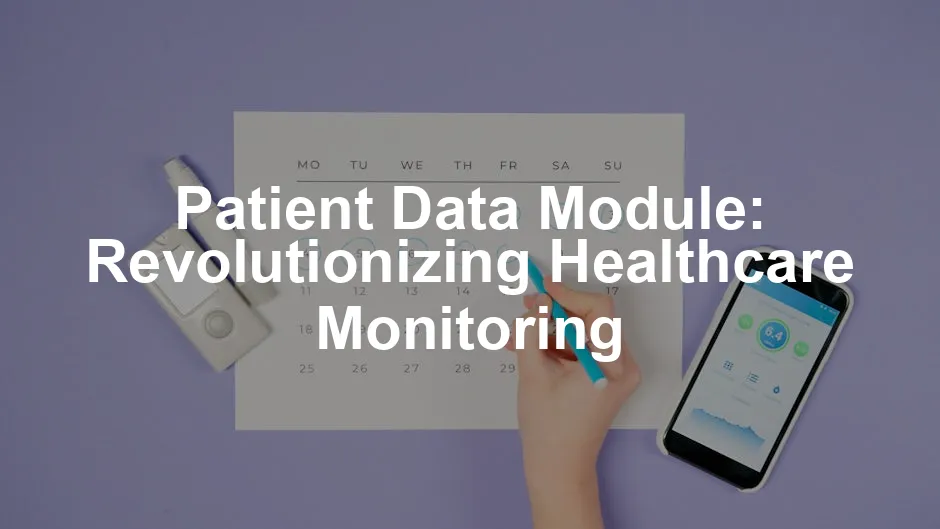Introduction
The Patient Data Module (PDM) transforms how healthcare professionals monitor patients. In today’s fast-paced medical environments, it enhances patient care and safety. With real-time data access, the PDM plays a vital role in effective patient monitoring.
Summary and Overview
A Patient Data Module is an advanced tool used in healthcare settings. It integrates essential medical parameters, enabling real-time monitoring of vital signs. This functionality ensures healthcare providers make timely decisions.
Technological advancements, like wireless capabilities and cloud storage, have led to the development of PDMs. These innovations allow for quick data retrieval and secure storage. If you’re looking to complement your data management system, consider a Medical Data Management System that can enhance your workflow!
Using PDMs offers numerous benefits, including improved patient outcomes and streamlined operations. They enable healthcare teams to respond swiftly to changes in a patient’s condition. Overall, PDMs are essential for enhancing clinical care and operational efficiency.

For detailed insights into workplace safety for healthcare professionals, check out the statistics for healthcare professionals on workplace safety 2024.
Key Features of Patient Data Modules
Real-Time Displays
Real-time data is crucial in patient monitoring. It enables healthcare providers to swiftly access vital signs and medical parameters. Imagine a nurse checking a patient’s heart rate instantly. That can make a significant difference!
PDMs display various types of data, such as ECG, blood pressure, and SpO2 levels. This timely information can lead to better decision-making. With quick access to critical data, healthcare teams can respond effectively, ultimately improving patient outcomes. And for monitoring those vital signs, a Portable ECG Monitor is a must-have!

Portability and Transportability
Patient Data Modules are designed for mobility. They make it easy to transport patients and their data within hospitals. In emergencies, every second counts! Portable modules ensure healthcare professionals can act quickly.
These devices often feature impressive battery life, allowing for extended use without recharging. Easy to transport, they integrate seamlessly with other medical devices. This connectivity enhances the overall efficiency of patient care during critical times. To further enhance transportability, consider a Wireless Blood Pressure Monitor that can be easily carried around!

Data Retention and Storage
Storing patient data during transport is vital for continuity of care. PDMs can retain data trends for up to eight hours, even in transit. This means essential information is always accessible, no matter where the patient is located.
Data security is a top priority for PDMs. They comply with healthcare regulations, ensuring patient information remains safe. Backup systems further enhance data integrity, giving healthcare providers peace of mind when managing sensitive patient data. For those looking for a secure option for data storage, check out a USB Flash Drive for Data Storage that keeps your information safe!

Functionality of CARESCAPE Patient Data Module
Integration with Clinical Intelligence
The CARESCAPE Patient Data Module (PDM) connects seamlessly with various monitoring systems. This integration is vital for delivering comprehensive patient care. It allows healthcare providers to access real-time data from multiple devices, ensuring informed decision-making.
Connected devices include vital sign monitors, ECG machines, and SpO2 sensors. Data synchronization across these platforms enhances accuracy and timeliness. When integrated with clinical decision support tools, the PDM provides alerts and recommendations, improving patient outcomes. To ensure accuracy in monitoring, consider adding a reliable Blood Glucose Monitor to your setup!

Parameter Measurement Capabilities
PDMs measure a wide range of medical parameters. These include ECG, SpO2, blood pressure, and temperature. Each measurement plays a crucial role in patient diagnosis and treatment.
For instance, continuous ECG monitoring helps identify heart irregularities early. Similarly, SpO2 levels inform healthcare providers about a patient’s oxygen saturation. Accurate blood pressure readings guide treatment for various cardiovascular issues. By providing these measurements, PDMs empower medical staff to act swiftly and effectively. To aid in this process, a Medical Stethoscope can be an invaluable tool for healthcare providers!

Understanding Patient Data
What Constitutes Patient Data?
Patient data encompasses various types of information recorded in medical files. Common data types include demographics, medical history, and treatment records.
Demographic data, such as age and gender, helps tailor care to individual needs. Medical history provides context for current health conditions, guiding treatment decisions. Accurate record-keeping is vital, as it influences patient outcomes and continuity of care. Maintaining precise and up-to-date records ensures that healthcare providers deliver the best possible treatment. To help with organization, a Health Record Keeping Binder can be a lifesaver!

Patient Data Collection Methods
Collecting patient data is crucial for effective healthcare. Various methods can be employed to gather this information.
Patient intake forms are a traditional yet effective approach. These forms collect essential details, including medical history and current medications. They help establish a baseline for patient care. For a handy solution, try a Patient Intake Forms Pad for easy data collection!
Online surveys have gained popularity, especially post-pandemic. They provide a convenient way for patients to share information. Plus, they can be easily analyzed for trends and insights.
Communication with healthcare providers is another vital method. Regular check-ins allow for updates on a patient’s condition. This ensures that healthcare teams have the most accurate data available.
To ensure data accuracy, best practices are essential. Always verify the information provided by patients. Implementing double-check systems can significantly reduce errors.
Patient confidentiality must remain a top priority. Utilize secure platforms for data collection, and train staff on privacy protocols. This fosters trust and encourages more open communication.

Importance of Data Organization
Organizing patient records chronologically is essential. This method allows healthcare providers to track a patient’s history easily. It creates a clear timeline of treatments and responses.
When records are well-organized, healthcare providers can make informed decisions. For instance, understanding previous medications can guide current prescriptions. Quick access to medical history aids in delivering efficient care. To assist in this, a Medical History Journal can be a wonderful addition!

Data management systems play a crucial role in this organization. They store records securely while allowing easy retrieval. Software solutions can automate this process, reducing the workload on staff.
With organized data, healthcare professionals can improve patient outcomes. It helps them identify patterns and trends in treatments. Overall, efficient organization leads to better patient care.
Challenges in Patient Data Management
Managing patient data comes with challenges. Data breaches remain a significant concern for healthcare providers. Cybersecurity measures must be robust to protect sensitive information.
Interoperability issues can also arise. Different systems may not communicate effectively, leading to incomplete records. Solutions like standardized data formats can alleviate these problems.
Staff training is vital in overcoming these challenges. Ensuring all team members understand data management protocols is essential. Regular training sessions can keep everyone updated on best practices.
By addressing these challenges, healthcare facilities can enhance data management. Implementing effective solutions leads to improved patient safety and care quality. And speaking of safety, don’t forget to have a well-stocked First Aid Kit on hand in case of emergencies!

Conclusion
Patient Data Modules (PDMs) are game changers in healthcare. They streamline patient data collection and enhance monitoring capabilities. With real-time access to vital information, healthcare professionals can provide better care.
These modules improve operational efficiency and reduce response times. They empower teams to make informed decisions quickly. Adopting PDMs can lead to better patient outcomes and safer environments. To complement your PDM, consider investing in a Digital Thermometer for accurate temperature readings!
Healthcare providers should consider implementing PDMs to transform their practices. Embrace this technology for a more effective and responsive healthcare experience.

FAQs
What is a Patient Data Module (PDM)?
A Patient Data Module (PDM) is an advanced tool used in healthcare. It collects and displays vital patient data for monitoring and treatment.
How does a Patient Data Module improve patient care?
PDMs enhance patient care by providing real-time data access. This allows for timely monitoring and quick responses to changes in patient conditions.
What types of data are typically collected by a PDM?
Common data types include vital signs like heart rate, blood pressure, and SpO2 levels. Demographics and medical history are also collected for comprehensive care.
How do I choose the right Patient Data Module for my facility?
Consider your facility’s specific needs. Look for features like data types supported, ease of use, and compatibility with existing systems.
Are Patient Data Modules compliant with healthcare regulations?
Yes, PDMs adhere to data protection and privacy laws. They are designed to keep patient information secure and confidential.
Please let us know what you think about our content by leaving a comment down below!
Thank you for reading till here 🙂
All images from Pexels




